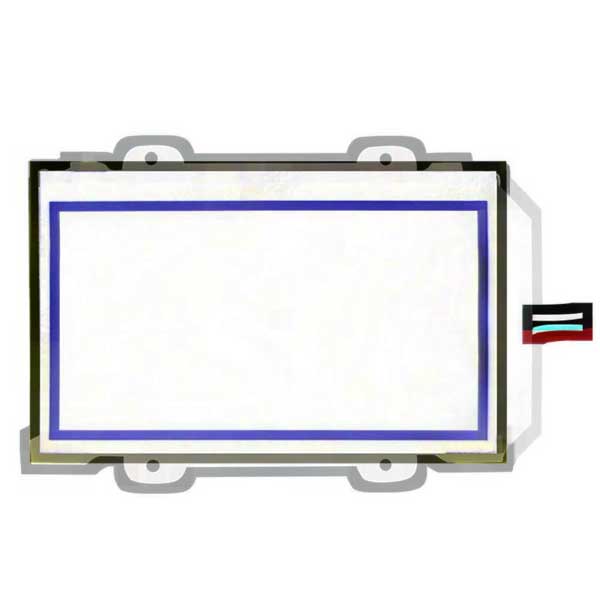Have you ever stopped to think about the amazing displays on our smartphones, televisions, and laptops? How did we go from clunky CRT screens to the sleek and vibrant displays we have today? The answer lies in the incredible story of OLED technology.
OLED stands for Organic Light-Emitting Diode and it’s a type of screen technology that has revolutionized the way we see and interact with our devices. But where did this amazing technology come from and how did it get to where it is today? That’s what we’re going to explore in this post, as we delve into the past, present, and future of OLED.
We’ll start by taking a look at the science behind OLED and understanding what the abbreviation means. Then, we’ll trace the origins of OLED displays and see how they have evolved. We’ll also compare OLED to its main competitor, LCD, and see which technology comes out on top.
But the story of OLED doesn’t end with its present-day success. We’ll also look ahead to the future and see what exciting new advancements and applications OLED has in store. And, of course, we can’t forget about the pioneers of OLED – the scientists and engineers who brought this incredible technology to life.
So sit back, relax, and get ready to take a journey through OLED history. Join us as we uncover the amazing story behind the displays that light up our lives.
1. The rise of OLED technology: An introduction
Organic Light-Emitting Diodes, or OLEDs, have changed the way we see and interact with our devices. The displays that brighten our lives on our devices have a history that’s both interesting and rich. These displays, made possible by OLED technology, are stunning to look at.
In this post, we will delve into the science behind OLEDs, tracing their origins, and exploring their evolution over time.
Let’s start by understanding the meaning of OLED. OLED technology works by using organic materials that emit light when an electrical current is applied. OLED displays are different from LCD displays. LCD displays need a backlight to show the pixels, but OLED displays can light up by themselves. So, OLED displays have deeper blacks, better contrast, and a more vivid display.
The history of OLED technology starts in the mid-1980s. It was during this time that scientists first found out that organic materials could give off light.
However, it wasn’t until the 1990s that OLED technology began to be developed for commercial use. Early OLED displays were small, limited in color reproduction, and had a short lifespan.
But over time, the technology improved, and today’s OLED displays are nothing like their predecessors. OLED technology has improved over time. Technology has become brighter.
It has become more efficient. It now lasts longer. In addition, they offer a much wider color gamut, faster response times, and deeper blacks than traditional LCDs.
So what makes OLEDs so different from LCDs? While both technologies use a matrix of pixels to display images, the way they create and illuminate those pixels is quite different. As mentioned earlier, OLED displays are self-illuminating, which allows for deeper blacks and higher contrast. On the other hand, LCDs use a backlight to illuminate the pixels, which can result in a washed-out image and lower contrast.
Of course, like any technology, OLEDs have their limitations. For example, OLED displays can suffer from image retention, where a faint ghost of an image remains on the screen after it has been turned off. However, this is a problem that is being addressed by manufacturers, and today’s OLED displays are much less prone to this issue than in the past.
So what does the future hold for OLED technology? The answer is exciting! With the development of flexible OLED displays and advancements in materials and processing, we can expect to see even more amazing displays in the future. OLEDs will continue to play a significant role in shaping the future of how we see and interact with the world around us.
Last, the story of OLED technology is one of discovery, innovation, and evolution. From its humble beginnings in the laboratory to its current place as a dominant technology in the world of displays, OLEDs have come a long way. And with new advancements on the horizon, we can expect OLEDs to continue to light up our lives for years to come.
2. The science behind OLED: Understanding the abbreviation
OLED is an abbreviation that stands for Organic Light-Emitting Diode. This cutting-edge technology handles the gorgeous displays we see on our favorite devices, such as smartphones, televisions, and laptops. Thanks to OLED, we can enjoy crystal-clear visuals with deep blacks, high contrast, and a more vibrant overall display. It’s truly amazing what scientists and engineers have been able to accomplish with this technology!
But what exactly does this abbreviation mean, and how does OLED technology work? Let’s dive into the science behind OLEDs and discover what makes them so special.
First, let’s start with the basics. A diode is a type of electrical component that allows electricity to flow in only one direction. In the case of an OLED, the diode is made of organic (carbon-based) materials that emit light when an electric current is applied. This is what provides the light for the pixels on an OLED display.
Now, what makes OLEDs different from traditional LCD displays? The main difference is that LCD displays use a backlight to illuminate the pixels, while OLED displays are self-illuminating. This means that each pixel in an OLED display emits its light, allowing for a more precise and vivid display. This is what gives OLEDs their signature deep blacks, high contrast, and more vibrant overall display.
But how does this work in practice? When an electric current is applied to an OLED pixel, the organic material in the diode becomes excited and emits light. This light then passes through a series of filters that determine the color of the pixel. By adjusting the intensity of the current, the brightness of the pixel can be controlled.
One of the biggest advantages of OLED technology is its flexibility. Unlike traditional LED displays, which use a rigid backlight, OLEDs can be bent and shaped into various forms. This has paved the way for the development of curved displays and even flexible displays, such as the ones found in some smartphones.
Another benefit of OLED technology is its efficiency. OLED displays consume less power than traditional LCD displays, which makes them ideal for use in devices that require long battery life, such as smartphones and laptops.
In conclusion, the science behind OLED technology is both simple and brilliant. OLED stands for Organic Light-Emitting Diode. OLEDs use organic materials to emit light when an electric current is applied. This technology has revolutionized how we see and interact with devices. OLEDs are flexible, and efficient, and have stunning displays, too. So, OLED technology is now one of the most popular screen technologies.
3. A look into the past: Tracing the origins of OLED displays
The history of OLED technology is an exciting one. It is full of scientific discoveries, technological innovations, and brilliant minds. But where did it all begin? Let’s take a step back in time and trace the origins of OLED displays.
The first discovery of the organic light-emitting properties of certain materials. These materials date back to the mid-1980s. Scientists discovered that applying an electric current to organic materials would cause them to emit light. This was a groundbreaking discovery, as it opened up a world of new possibilities for display technology.
In 1987, a group of researchers at Eastman Kodak developed the first OLED prototype. This prototype was a small, simple device. This one consisted of a thin layer of organic material sandwiched between two electrodes. When an electric current was applied, the organic material would emit light, producing a bright and vibrant display.
Over the next few years, researchers continued to refine the OLED technology. They experimented with different organic materials, processing methods, and designs. One of the biggest challenges they faced was finding a way to make the displays more efficient and longer-lasting. But with each discovery and innovation, the OLED displays improved. So it has become brighter, more efficient, and more reliable.
By the late 1990s, OLED displays were beginning to attract the attention of the consumer electronics industry. Companies saw the potential of this technology. So, they started investing in research and development to bring OLED displays to market. In 1998, the first OLED display was released, marking a major milestone in the history of OLED technology.
Today, OLED displays have become one of the most popular screen technologies in the world. They’re used in a wide range of devices, from smartphones and televisions to laptops and wearable devices. With its flexibility, efficiency, and stunning displays, OLED technology has revolutionized the way we see and interact with our devices.
So there you have it, a brief look into the past and the exciting origins of OLED displays. Join us as we continue our journey through OLED history and explore the present and future of this amazing technology.
4. The OLED revolution: A battle between two display technologies
As we’ve seen, OLED technology has come a long way since its early days, and it continues to evolve and improve. With its many advantages over other display technologies, it’s no wonder that OLED has become so popular. But what exactly makes OLED so special, and why should you care about it? Let’s take a look at some of the key benefits of OLED displays.
First of all, OLED displays offer much better picture quality than other display technologies. This is because they don’t use a backlight, like LCDs, which can sometimes wash out the colors and obscure the blacks. With OLED, each pixel is self-illuminating. It means that they can create deep blacks and high contrast. So it makes for a much more vibrant and lifelike picture.
Another big advantage of OLED displays is their thinness and flexibility. Because OLEDs don’t need a backlight, they can be made much thinner than LCDs. This makes them ideal for use in flexible devices like smartphones, laptops, and televisions. These devices are where you want a big, vibrant display that doesn’t add a lot of bulk.
In addition to their thinness and flexibility, OLEDs are also more energy-efficient than other display technologies. This is because they only use power when they need to illuminate a pixel, and they can turn pixels off completely when they’re not in use. This means that OLED displays can help save on battery life, making them ideal for use in devices that need to run for long periods without being recharged.
But OLED displays aren’t just good for our devices – they’re also good for the environment. OLEDs are made from organic materials that are less harmful than the materials used in other displays. And because OLEDs are more energy-efficient, they can help reduce energy consumption, which is better for the planet.
Finally, OLED displays offer many benefits to the people who use them. They’re easier on the eyes, they offer more vivid and lifelike pictures. And finally, they’re thinner and more flexible, making them easier to carry around and use. All these benefits make OLED displays an attractive choice for people who want the best possible display technology for their devices.
So there you have it – the many advantages of OLED displays. From their stunning picture quality to their flexibility, energy efficiency, and eco-friendliness, there are many reasons to love OLED technology. With its many benefits and its bright future ahead, it’s clear that OLED is here to stay and that it will continue to play a big role in our lives for years to come.
5. A Brighter Future: The advantages of OLED display
As we dive deeper into the world of OLED displays, it’s clear to see why they are becoming increasingly popular. From smartphones to laptops, OLEDs are revolutionizing the way we interact with our devices. In this section, we will discuss the many advantages of OLED displays and why they are the future of screen technology.
First, let’s start with the most obvious advantage: stunning visuals. OLEDs use organic materials that emit light when an electric current is applied, creating vivid and intense colors that pop off the screen. This is a stark contrast to traditional LCD displays that rely on a backlight to illuminate the pixels. With OLEDs, each pixel can be lit independently, which means that the displays can produce true blacks, higher contrast, and a more vibrant overall display.
Another advantage of OLED displays is their flexibility. Since the organic materials used in OLED displays can be deposited on a flexible substrate, they can be bent and curved in ways that traditional displays simply cannot. This opens up a world of possibilities for device design. And it allows for sleeker, more ergonomic, and more eye-catching devices.
OLED displays are also more efficient than traditional LED displays. They use less energy and are less wasteful, which makes them a more eco-friendly choice. This is especially important for devices that we use all day long, like our smartphones. OLED displays also have a longer lifespan than traditional LED displays, so you won’t have to replace your devices as often.
Finally, OLED displays offer a faster refresh rate and a lower input lag. It is important for gamers and movie lovers alike. This means that you can enjoy smooth and seamless visual experiences. Of course, without any delay or interruption.
Lastly, OLED displays offer a brighter future with their stunning visuals. It offers flexibility, efficiency, a longer lifespan, and faster refresh rates, too. As technology continues to evolve, we can expect OLED displays to become even more advanced. So they will offer us an even better viewing experience. Whether you’re a gamer, movie lover, or someone who wants the best viewing experience possible, OLED displays are the way to go.
6. The birth of OLED: A timeline of innovation
The story of OLED technology dates back several decades, and it’s a fascinating tale of scientific discovery, innovation, and transformation. In this part of the article, we’ll trace the birth of OLED and take a look at some of the key moments and milestones in its history. So, let’s get ready to travel back in time and discover how OLED technology changed the world of displays forever.
1987: The Discovery of Organic Light-Emitting Diodes
It all started in 1987 when researchers at Eastman Kodak first discovered that organic materials could emit light. This was a game-changer, as previous display technologies relied on inorganic materials that were much less flexible and efficient. With this breakthrough, the researchers opened up a new world of possibilities for the future of displays.
1991: The First OLED Prototype
Just a few years later, in 1991, scientists at the University of Cambridge created the prototype of an OLED display. This prototype was based on the discovery at Kodak and demonstrated that organic materials could be used to create a practical and efficient display. This was an exciting moment, as it paved the way for the development of the OLED displays we know and love today.
1997: The First OLED Display on the Market
It took a few more years, but by 1997, the first OLED displays were finally available on the market. These early displays were relatively small and not very bright, but they marked the beginning of a new era in display technology.
2007: The Launch of the First OLED Smartphone
A decade later, in 2007, the first OLED smartphone hit the market. This was a significant moment, as it showed that OLED displays could be used in portable devices. And, it opened up a new world of possibilities for mobile technology.
Today: The Rise of OLED
Fast forward to today, and OLED technology has become one of the most popular display technologies in the world. With their stunning visuals, flexibility, and energy efficiency, OLED displays have revolutionized the way we see and interact with our devices. From smartphones and laptops to televisions and even vehicles, OLED displays are now a critical component of many of the products we use every day.
To sum up, the birth of OLED technology was a long and fascinating journey. It was full of scientific discoveries and technological advancements. From the prototype in 1991 to the widespread use of OLED displays today, the story of OLED is a testament to the power of innovation and the incredible impact it can have on our world.
The pioneers of OLED: Meet the inventors of this game-changing screen technology
Have you ever stopped to think about who created the technology behind the stunning displays on your smartphones, televisions, and laptops? Well, look no further!
OLED is a type of display technology that uses organic materials to create light when an electric current applies. Unlike traditional LED displays, OLED displays are self-illuminating. It allows for deeper blacks, higher contrast, and a more vibrant display. However, traditional LED displays use a backlight to illuminate the pixels.
So, who were the masterminds behind this game-changing technology? The birth of OLED dates back to the mid-1980s when three researchers made a groundbreaking discovery. Ching W. Tang, a chemical engineer at Eastman Kodak, and Steven Van Slyke, a physicist, were the first to show an OLED device. Later, they were joined by a third researcher, Robert S. Baker Jr. Together, they filed a patent for the first OLED device.
Their work paved the way for OLED displays to become one of the most popular screen technologies of our time. Today, OLED technology is used in a wide range of consumer electronics, from smartphones and laptops to televisions and even automotive displays.
Tang, Van Slyke, and Baker’s discovery has had a profound impact on the world of technology. Besides, they have revolutionized the way we see and interact with our devices. Thanks to their work, we now have access to displays that are brighter, more efficient, and longer-lasting.
At last, the next time you’re using your OLED-powered device, take a moment to think about the brilliant minds who made it all possible. Ching W. Tang, Steven Van Slyke, and Robert S. Baker Jr. are the pioneers of OLED technology. And their legacy will continue to shape the future of displays for generations to come.
References
Hong, G., Gan, X., Leonhardt, C., Zhang, Z., Seibert, J., Busch, J. M., & Bräse, S. (2021). A brief history of OLEDs—emitter development and industry milestones. Advanced Materials, 33(9), 2005630.
Sun, N., Jiang, C., Li, Q., Tan, D., Bi, S., & Song, J. (2020). Performance of OLED under mechanical strain: a review. Journal of Materials Science: Materials in Electronics, 31, 20688-20729.






